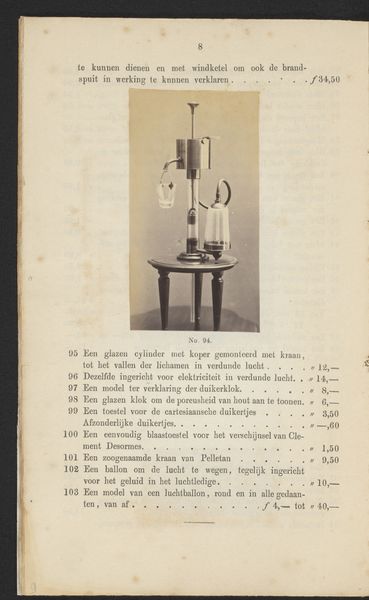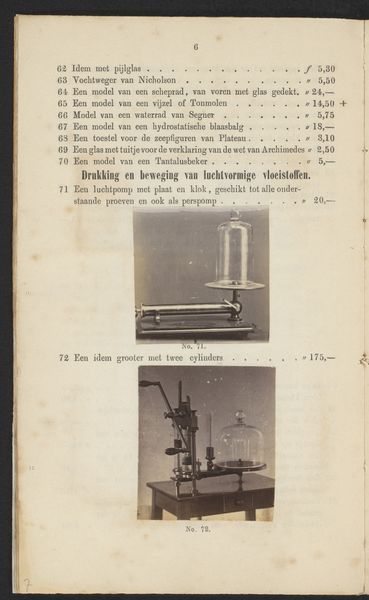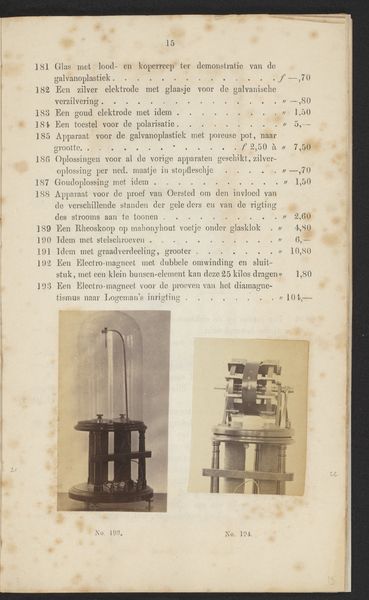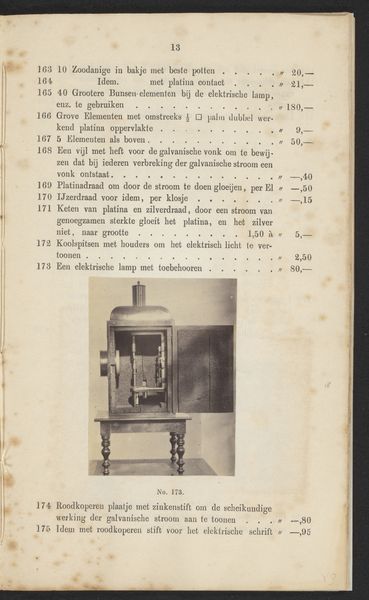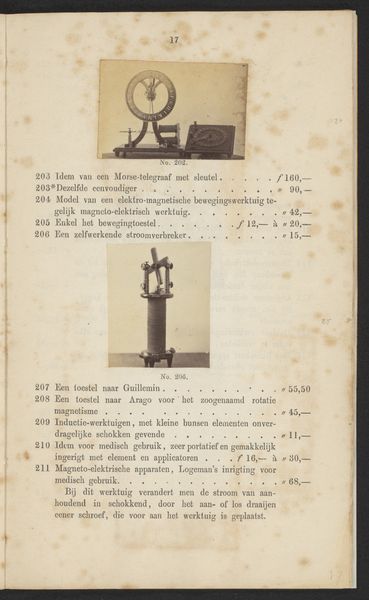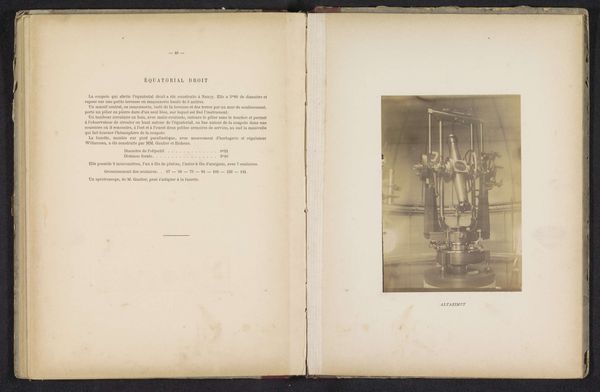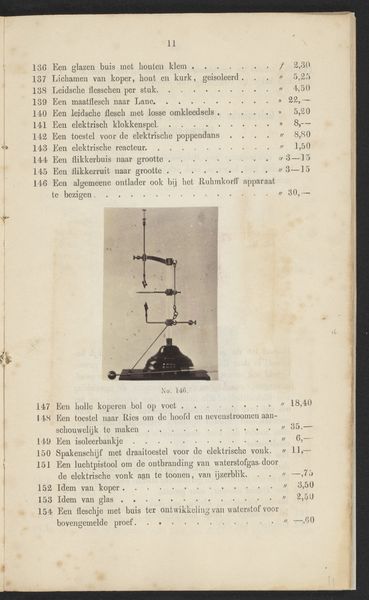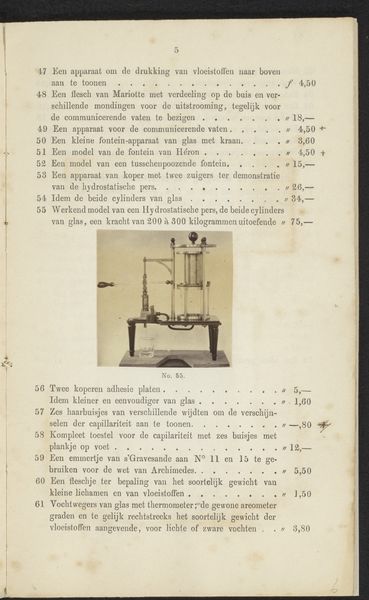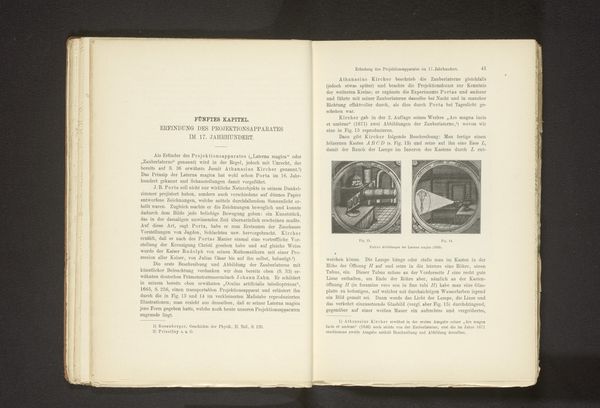
print, photography
# print
#
photography
Dimensions: height 74 mm, width 84 mm
Copyright: Rijks Museum: Open Domain
Editor: This is a photographic print titled "Elektriseermachine," dating back to before 1867, by F.W. Funckler. The image, set on what seems to be a page in a book, shows what appears to be some sort of static electricity generator. It seems almost like a whimsical piece of proto-scientific apparatus. What do you see in this piece, given your focus on history? Curator: This is a fascinating object! Seeing it catalogued in a printed work situates it firmly within the rise of both scientific pursuit and a sort of commercialization of scientific equipment during the 19th century. This image acts almost as an advertisement. Do you notice how it's not just documenting the object but also implicitly promising its capabilities to potential buyers or curious amateur scientists? The printed text surely lists dimensions and prices. Editor: Yes, I see that now! The layout of the photograph in a catalog highlights the intertwining of scientific exploration, manufacturing, and distribution of scientific instruments. It’s not just about scientific advancement, it's also about markets and public access to knowledge. Curator: Exactly. Furthermore, consider the implications of photography being used to reproduce these machines. The photograph democratizes the image of these exclusive machines. The act of printing itself becomes a vital method of distributing knowledge and expanding participation within scientific endeavors. So the question is who gets access, how and where. Editor: So it is about looking into these systems? I’ve always seen photography as a neutral recording medium, but now I am viewing it more as another layer that determines public knowledge about art. Curator: Precisely. Analyzing it like this can reveal power dynamics and access to knowledge, reshaping how we understand both science and its relationship to society at that time. Editor: It is like unpacking what knowledge was considered valuable at that time, where value is also financial, academic, cultural! This recontextualizes even what feels like just a 'record' for me. Thank you!
Comments
No comments
Be the first to comment and join the conversation on the ultimate creative platform.
